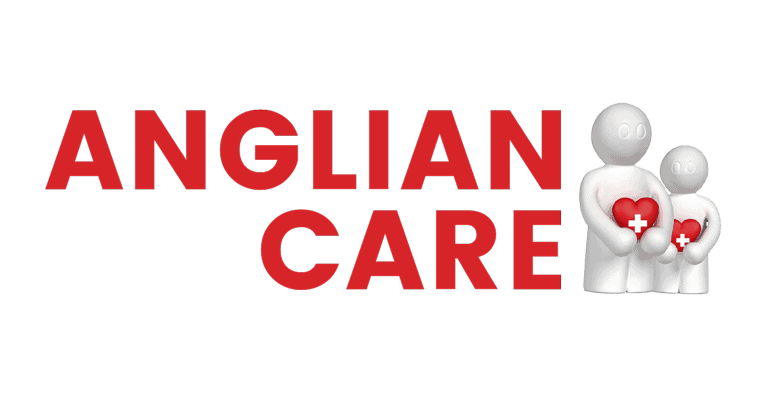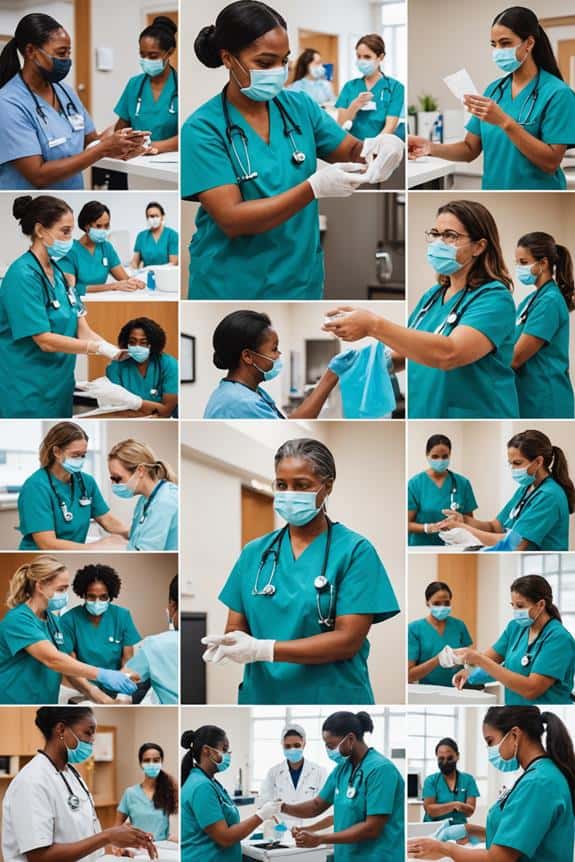Safeguarding in health and social care is essential for protecting vulnerable individuals from abuse and neglect. It focuses on ensuring their safety and promoting their well-being. Here are key points you should know:
- It includes policies and practices that prevent exploitation.
- Vulnerable groups include children, the elderly, and those with complex needs.
- Healthcare staff have a duty to recognize and report signs of abuse.
- Legal frameworks like the Care Act 2014 guide safeguarding efforts.
- Continuous training is vital for staff to maintain a safe environment.
Understanding these components helps create a culture of safety and protection for everyone involved. You'll discover even more significant insights by exploring further.
Definition of Safeguarding
Understanding safeguarding is essential in health and social care, as it involves protecting individuals' health, wellbeing, and human rights. Safeguarding is about ensuring that everyone, especially the most vulnerable, can live safely and free from abuse or neglect. This responsibility extends across various sectors, including healthcare, social services, and law enforcement. Organizations like Anglian Care exemplify the commitment to safeguarding by providing comprehensive care support for the elderly, ensuring their safety and wellbeing.
The safeguarding importance cannot be overstated. It's a collective duty that everyone shares in maintaining a safe environment. Various safeguarding techniques are employed to achieve this goal. For instance, staff undergo continuous training to recognize and respond to potential risks, ensuring they're equipped to protect those in their care.
The Care Act 2014 outlines six key principles of safeguarding that guide these practices:
- Empowerment: Supporting individuals to make informed decisions about their wellbeing.
- Prevention: Taking proactive measures to prevent abuse or neglect before it occurs.
- Proportionality: Responding appropriately to the level of risk involved.
- Protection: Ensuring that individuals are supported and represented.
- Partnership: Collaborating with others to provide effective safeguarding solutions.
- Accountability: Ensuring that everyone involved in safeguarding is responsible for their actions.
Groups in Need of Protection
Who deserves protection in our communities? Safeguarding is essential for several groups, especially those considered vulnerable populations. Children and young people are at the forefront, as they often face maltreatment, making it imperative to guarantee their health and well-being in care environments. Additionally, those receiving home care for dementia often require particular attention, as they are at an increased risk of neglect and abuse due to their condition.
However, adults at risk also require significant attention. This includes individuals in home care settings, those with physical, sensory, or mental impairments, and people with learning disabilities. These groups often need targeted safeguarding measures to protect them from abuse and neglect.
Here are some key groups that necessitate safeguarding:
- Elderly Individuals: Often isolated, the elderly can be particularly susceptible to neglect and abuse.
- People with Complex Needs: Those with multiple and complex health or social care needs require specialized protection to guarantee their rights are upheld.
- Individuals with Disabilities: Both physical and mental disabilities can put individuals at higher risk, demanding tailored safeguarding approaches.
Local authorities have a legal obligation to conduct risk assessments for anyone at risk of abuse or neglect, regardless of whether they receive local authority services. This guarantees that every individual is given the protection they deserve and that their safety and rights are prioritized.
In our efforts to create a safe community, it's essential to recognize these groups and implement effective safeguarding strategies that address their unique vulnerabilities. By doing so, we can foster an environment where everyone feels secure and valued.
Responsibilities of Healthcare Staff
In safeguarding vulnerable individuals, healthcare staff play an essential role in ensuring their health and well-being. You have a collective responsibility to prioritize safeguarding across various care settings, including personal care environments that focus on the dignity and respect of each individual. This means being vigilant and proactive in protecting the rights and welfare of those in your care, as highlighted by the benefits of personalized service.
To effectively fulfill these responsibilities, staff training is vital. You must be trained to recognize the signs of abuse or neglect, which can manifest as:
- Changes in behavior
- Unexplained injuries
- Emotional distress
When you suspect abuse or neglect, it's your duty to report it. Mandatory reporting is not just a guideline; it's a legal requirement that empowers you to take action. Knowing the steps to take when you identify a concern can make a significant difference in a vulnerable person's life.
The NHS Safeguarding Accountability and Assurance Framework (SAAF) outlines your roles and responsibilities in safeguarding practices. Continuous training and awareness programs help you stay informed about safeguarding policies, legislation, and best practices. This ongoing education fosters a strong safeguarding culture within your organization, allowing you to intervene effectively when necessary.
Legal Framework for Safeguarding
The legal framework for safeguarding vulnerable individuals is vital for guaranteeing their protection and well-being. At the heart of this framework is the Care Act 2014, which outlines six key principles: empowerment, prevention, proportionality, protection, partnership, and accountability. These principles guide local authorities in their statutory duties to support individuals at risk of abuse or neglect, mandating assessments for those who can't self-protect due to care needs.
To understand how these laws intersect, consider the following table:
| Legislation | Key Focus |
|---|---|
| Care Act 2014 | Principles for safeguarding |
| Human Rights Act 1998 | Protection of individual rights |
| Sexual Offences Act 2003 | Prevention of sexual abuse |
| Safeguarding Adults Boards | Oversight of local safeguarding |
However, the legal framework also presents safeguarding challenges. Legislative implications mean that professionals must stay updated on laws to guarantee compliance and effective responses. Integration between agencies is vital, as emphasized in both local and national healthcare policies. This collaboration helps streamline efforts in safeguarding vulnerable individuals.
Reporting and Resources Available
Effective reporting procedures are essential for safeguarding vulnerable individuals, guaranteeing that concerns are addressed swiftly and seriously. You play a significant role in this process by being aware of the established reporting mechanisms that allow you to raise safeguarding concerns without hesitation. These procedures are designed to guarantee that your reports are taken seriously and acted upon promptly. Organizations like Anglian Care, with their commitment to continuous professional development, exemplify the importance of staff training in recognizing and reporting safeguarding issues.
To support you in this responsibility, various resources are available. For instance, NHS England provides guidance on serious issues like modern slavery and human trafficking, emphasizing the importance of addressing these matters effectively. It's critical to familiarize yourself with this guidance, as it outlines the steps to take when you suspect someone is at risk.
Additionally, contact information for safeguarding inquiries is readily accessible, making it easier for you to communicate with safeguarding authorities. Never underestimate the power of your voice; reporting even small concerns can lead to significant protective measures.
Ongoing evaluation of safeguarding effectiveness is also significant. Inspection reports regularly publish findings, promoting transparency and accountability within health and social care services. This continual assessment guarantees that safeguarding practices evolve and improve over time.
Engaging in safeguarding training equips you with the knowledge and skills necessary to identify and report concerns proactively. By fostering a culture of safety and support, you contribute to a more secure environment for vulnerable individuals, guaranteeing they receive the protection they deserve. Remember, your vigilance can make all the difference in someone's life.
Frequently Asked Questions
What Are 6 Principles of Safeguarding?
The six principles of safeguarding focus on empowering vulnerable adults and ensuring child protection. You'll prioritize prevention, proportionality, and protection while fostering partnership and accountability to create a safer environment for everyone involved.
What Are Examples of Safeguarding?
Examples of safeguarding include implementing safeguarding policies that protect vulnerable individuals, providing safeguarding training to staff, and ensuring safe environments. You can also promote awareness and report concerns to support timely interventions for those at risk.
Why Is Safeguarding so Important?
Safeguarding's important because it protects vulnerable populations from harm and abuse. By fulfilling your legal responsibilities, you guarantee safety and dignity, fostering trust and improving overall well-being in those you care for.
What Is an Example of a Safeguard in Healthcare?
An example of a safeguard in healthcare is mandatory training for staff, which enhances patient protection and risk management. This equips you to identify and address abuse or neglect, ensuring vulnerable individuals receive the care they deserve.





